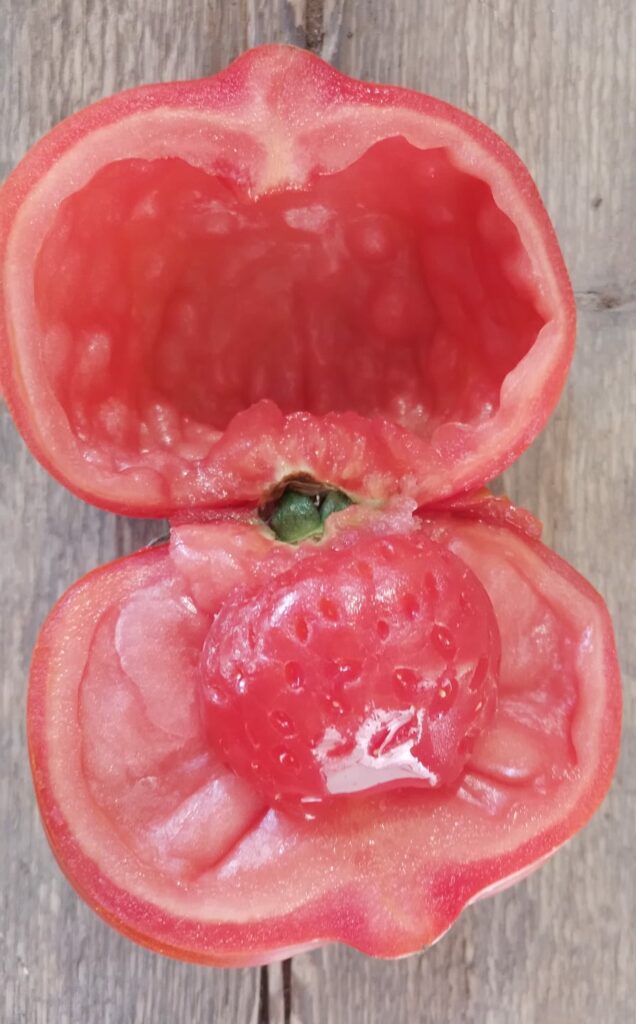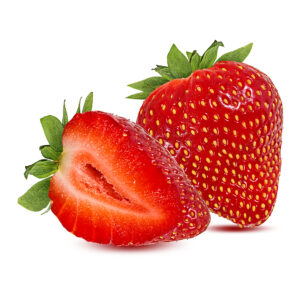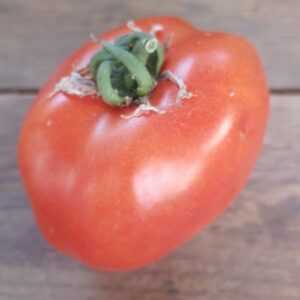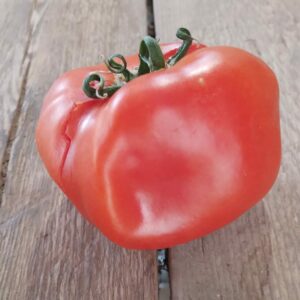A MYSTERY IN THE TOMATO BED
This mild spring is a sheer delight. The heat, which in recent years has mounted its attack at the end of Pesach (and sometimes even during the holiday), has only peeked in occasionally for a day or two or three this season. But the evenings and mornings remain nice and cool, to the point of bringing us longsleeved-shirt and even sweater-weather. We are now being granted a few pleasant hours of grace at the day’s start, followed by relief from the heat towards afternoon. The winter vegetables in Chubeza’s field are also basking in these calm, unchallenging end-of-the-season days. The beets and kohlrabi, fennel, cabbage and carrots are growing comfortably, free of their usual end-of-season syndromes. Usually by May they are gasping for breath as they muster the perseverance to grow. And this year, it’s a pleasure. These veggies are growing peacefully, with no panic attacks. For the most part, even the summer vegetables look unfazed by the temperate climate they’re encountering, even without the regular heatstroke that strikes at the very start of the growing season. The sun is still shining, and there are enough hot, sundrenched hours for these veggies to gracefully grow.
And yet, even against this idyllic backdrop, strange surprises have emerged. Here’s what happened: During the picking of our “veteran” tomato beds, we suddenly came across some rather strange-looking tomatoes. At first glance, they looked big and red. But something caught our attention. At second glance, we noticed their slightly distorted shape, as if someone had somewhat crushed them between their fingers. Take a look for yourself:
Our additional touching and pressing jut added to the embarrassment. They felt hollow inside… Could that be?! Of course, to satisfy our curiosity and solve the mystery, we decided to cut them open and check what lay inside. But the confusion only grew! Inside, we discovered an empty space with something at the center that looked like a small strawberry growing inside the tomato…???

I then set out to investigate the mystery…
So – No, our tomato did not marry a strawberry and give birth to a straw-mato… Beyond the simple fact that we have no strawberries in Chubeza, cross-pollination between a strawberry and tomato is just not botanically possible. These two plants originate from completely different families, and even if their cross-pollination attempt was intentional, it would result not in fertilization, but simply wasted pollen. A taste test of the simulated “strawberry” inside the tomato revealed that this was a genuine tomato whose texture was a bit strange, but its taste remained familiar, sweet, tomato-like and quite delicious.
So what’s the real story? Let’s start by stating that although the tomato is included among our salad vegetables, it is in fact a fruit! Its thick peel contains round, flat seeds, which are covered in a moist gel containing a substance that prevents germination. In order to develop from a flower to a fruit, plants needs pollination, and towards that aim we help out by proving the lovable bumblebees that I’ve written about in the past and promise to refresh your memory about soon. What happened with some of our tomatoes this season is that fertilization did not fully materialize. At full fertilization, the seeds would develop into the tomato seeds, and the gel would change, envelop them and fill the tomato skin, resulting in the tomato fruit we know. But in the case of our strange tomato, due to a natural mutation coined parthenocarpy, the tomato plant produced fruit without full fertilization of the ovaries. The fruit’s shell was built in its entirety, but the fruit inside did not fully develop and remained seedless. The fertilization was halted at the stage when there is a gel inside the fruit, topped by a layer of undeveloped seeds. This phenomenon is called “puffiness.”
So why does it look like a strawberry? To explain this, we need to explain what a strawberry is… and once again confuse you a bit. Strawberries are found in the fruit section of our catalog, however they’re actually a “false fruit,” a pseudocarp. In fact, a strawberry is a receptacle (the base of the flower on which the parts of the flower grow: the sepals, the petals, the stamens and the flowers). In the case of the strawberry, this is an inflated, juicy substrate. Each of the black bumps on the strawberry’s surface is actually a tiny little achenes (nut), and inside it – a seed. Thus, the strawberry is actually a receptacle for clustering many small nuts which are the real fruits. Such a botanical structure is also known as a “multiple fruit”
Take a look at this strawberry with new eyes:

So, it is true that these are indeed two different phenomena, but each creates a similar appearance. The swelling in the undeveloped tomato fruit is reminiscent of the swollen receptacle of the strawberry, its immature seeds that have not yet ripened and are submerged in the inner gel resemble the tiny nuts inside the substrate of the strawberry, and their red color complete the resemblance…Thus, when all is said and done, sometimes a strawberry inside a tomato is simply… a tomato.
So, my dear Watson, Part One of the mystery is solved.
Part Two must answer: Why is this happening??? What causes our lovely tomato to grow a strange cavity within, to bear a full fruit and remain shriveled and strawberry-like? It turns out that various stress conditions (temperatures that are too low or too high, plentiful rains, too much nitrogen, too little potassium, or various viruses) can interfere with full pollination taking place, resulting in swollen fruits. In our case, the tomato varieties that have finished yielding in the field are still the winter varieties, so we do not think that the cool spring disturbed them. Our hunch is that probably a virus-caused blight first frequented our tomatoes this year, and perhaps interfered with their pollination or fertilization. The phenomenon is not extensive, and the bed in which we identified the strange tomatoes is already at the end of the harvest, thus we are not really alarmed. The important thing is that this intriguing phenomenon gave us all the opportunity to learn something new and fascinating about our old familiar tomatoes.
May we all continue to learn new, fascinating things each week, to meet and appreciate new and old friends, and to adapt ourselves to changing realities.
Have a great week!
Alon, Bat-Ami, Dror, Orin and Einat, and the entire Chubeza team
____________________________________________________
WHAT’S IN THIS WEEK’S BOXES?
This week, the tomato quantity is smaller than usual – By mistake, we did not receive tomato plants for the month of February, thus leaving us with a gap of several weeks between tomato planting. Thus, we’re expecting a tomato shortage for several weeks. (We’re attempting to purchase tomatoes from other growers, however this is a period of shortages in the organic market). Hopefully we will shortly be meeting sweet tomatoes in their usual quantities. Cucumbers, however, are plentiful. We’re sending you a generous supply. Enjoy!
Monday: Lettuce, garlic/scallions, squash+zucchini, beets, carrots, potatoes, parsley, Swiss chard, tomatoes, cucumbers, onions/fennel/ cabbage/turnips.
Large box, in addition: Acorn squash/slice of pumpkin/sweet potatoes, celery/New Zealand spinach/kale, eggplant/fakus.
FRUIT BOXES: Nectarines/shesek, red apples/pears, avocados, bananas.
Wednesday: Lettuce, garlic/onions, squash+zucchini, beets/sweet potatoes, carrots, potatoes, parsley/cilantro, Swiss chard/New Zealand spinach/kale, tomatoes, cucumbers, fennel/cabbage/turnips/kohlrabi.
Large box, in addition: Acorn squash/slice of pumpkin, celery/scallions, , eggplant/fakus.
FRUIT BOXES: Nectarines, red apples/pears, avocados, bananas.


